CompTIA Security+ Certification
Security Operations
Automation Other Considerations
In this article, we explore critical considerations for implementing automation and orchestration in IT and security operations. While these technologies provide substantial benefits, addressing potential challenges such as complexity, cost, single points of failure, technical debt, and ongoing supportability is essential for long-term success.
1. Complexity
Complexity arises from the intricate, interconnected nature of automated systems, making management and troubleshooting more challenging as systems grow. Managing interdependencies and ensuring seamless collaboration between components often lead to issues with design, operational management, and debugging.

To reduce complexity:
- Simplify overall design and workflows.
- Maintain comprehensive and up-to-date documentation.
- Provide thorough training for technical staff.
Adopting a modular design approach helps keep processes manageable and understandable. Detailed documentation of all automated processes supports efficient troubleshooting, and well-trained teams ensure tools and technologies are used effectively.
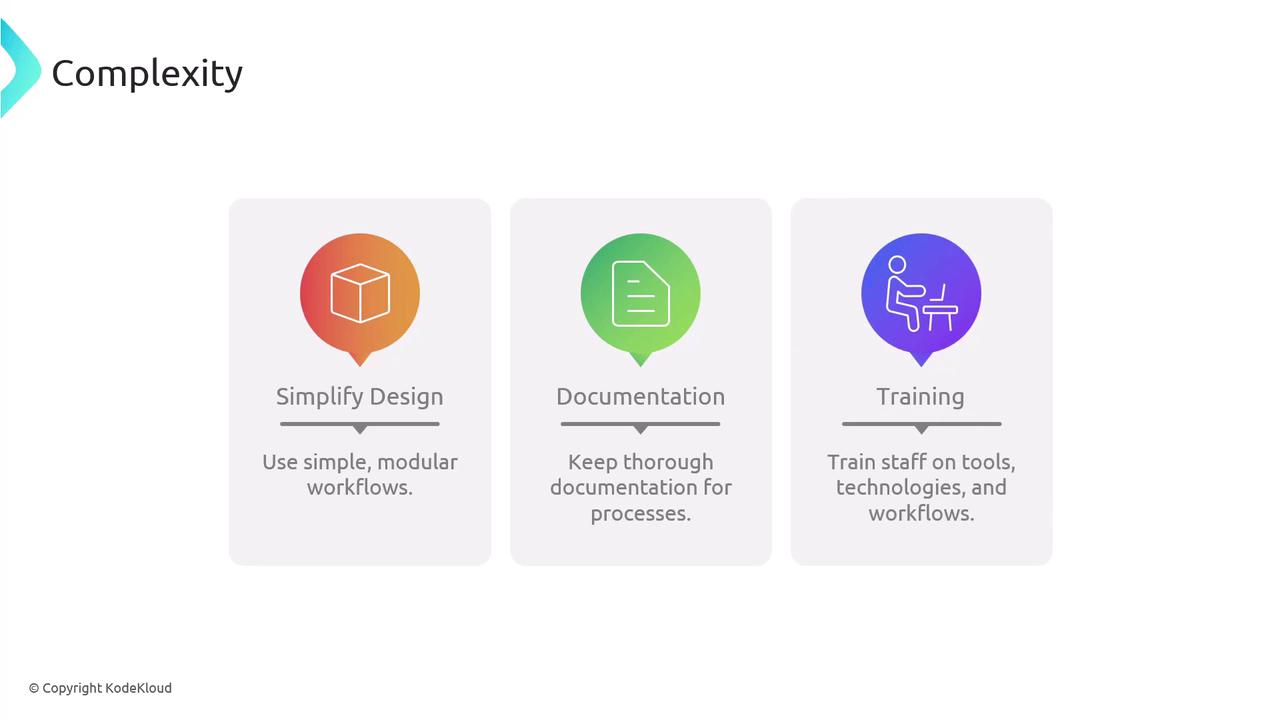
For example, when automating deployment pipelines, break down the process into smaller, manageable steps rather than creating overly complex workflows.
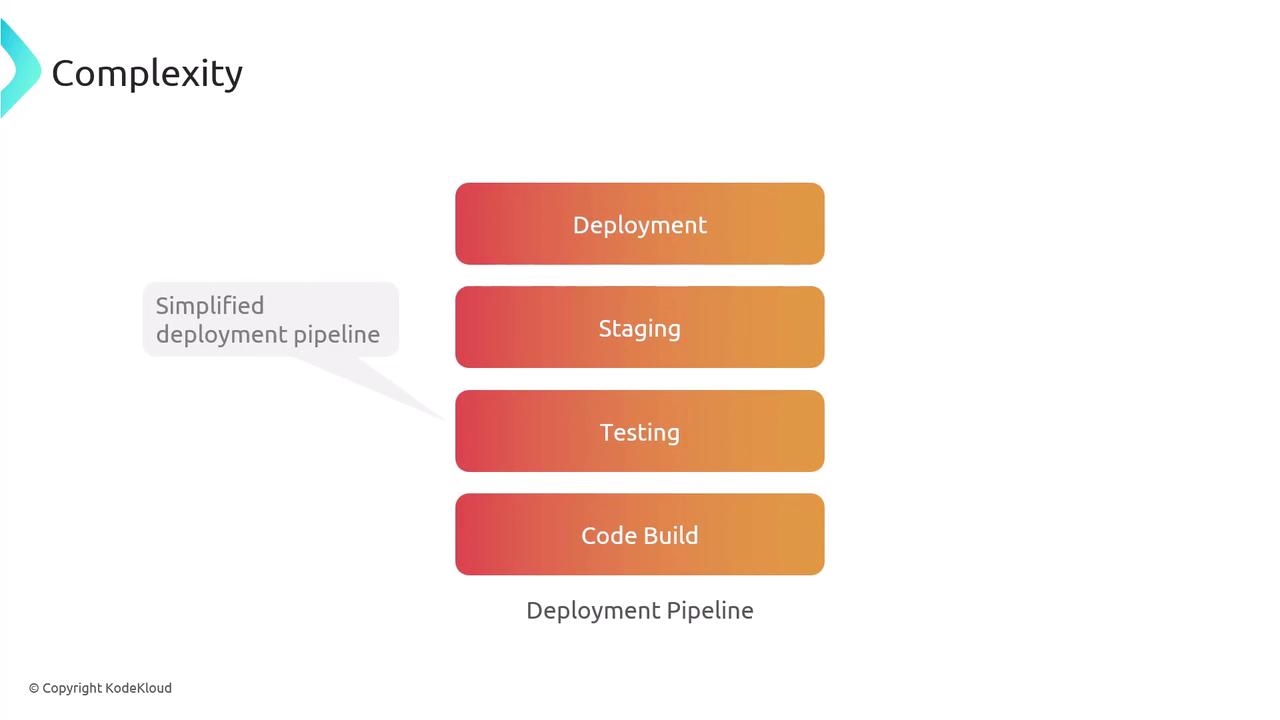
2. Cost
Cost covers the financial investment required for implementing and maintaining automation and orchestration tools. This includes initial expenditures, ongoing operational expenses, and hidden costs like maintenance, updates, and training.
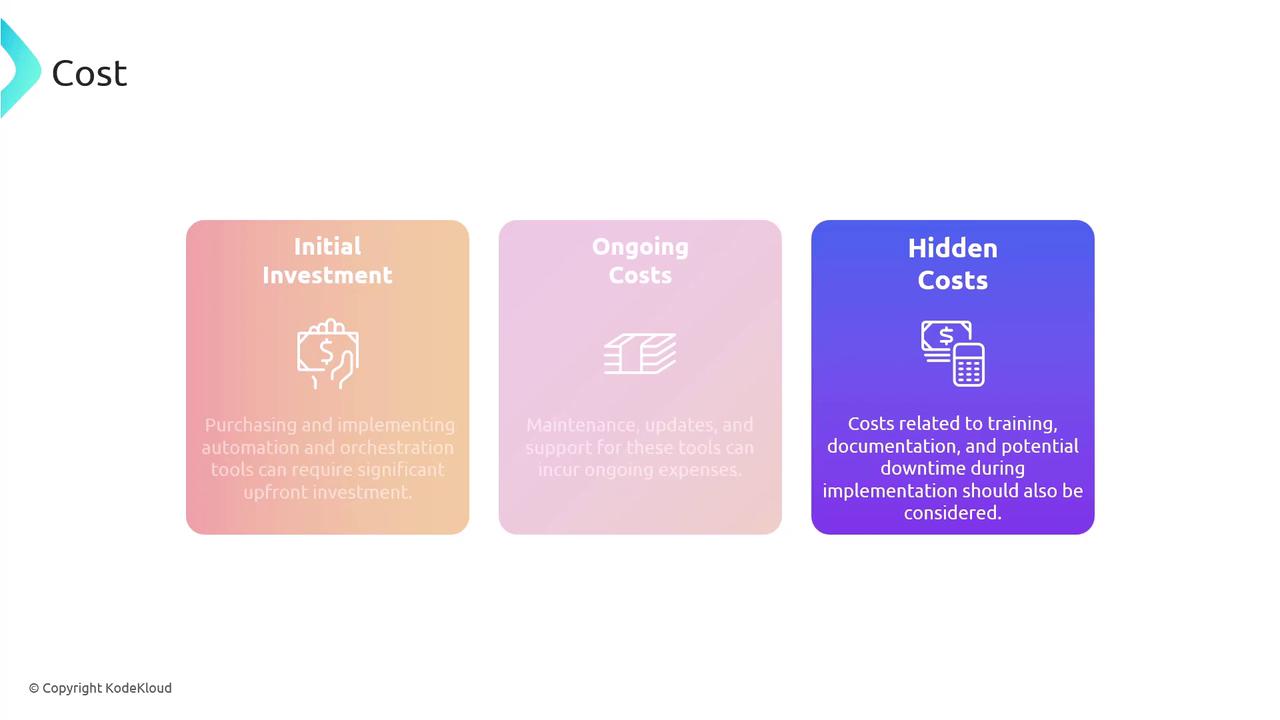
Effective strategies to manage cost include:
- Conducting a detailed cost-benefit analysis.
- Phasing the implementation of automation and orchestration.
- Leveraging open-source tools where possible.
Perform a thorough cost-benefit analysis to ensure that the investments yield measurable returns. Implementing automation in phases allows for adjustments based on early feedback and budget distribution. Open-source alternatives, such as Kubernetes, can significantly reduce software licensing expenses.

3. Single Points of Failure
A single point of failure (SPOF) is any system component that, if it fails, could halt the entire operation. Relying on a single tool or script can create vulnerabilities that result in significant downtime.
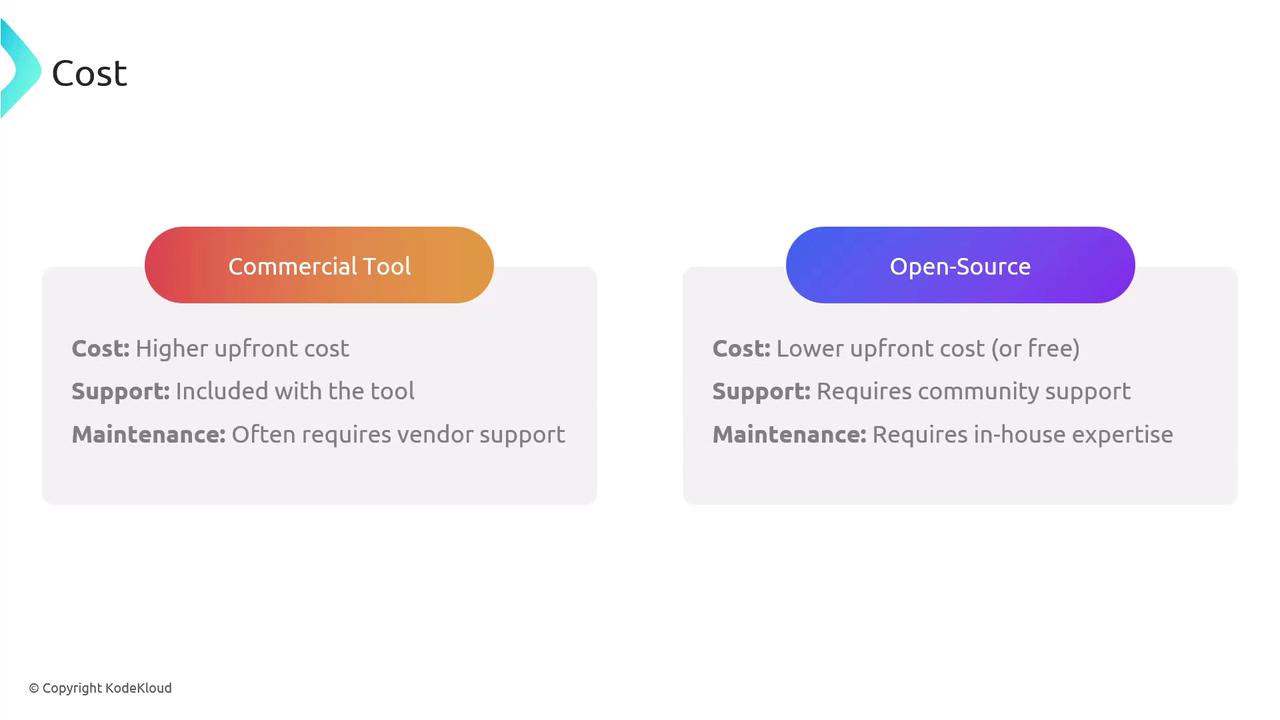
Mitigation strategies for SPOFs include:
- Building redundancy into critical components.
- Developing robust failover mechanisms.
- Conducting regular tests to ensure failover efficacy.
Implement redundancy and effective failover strategies to bolster resilience. Regular testing ensures that failover mechanisms perform as expected, thereby minimizing potential disruptions.
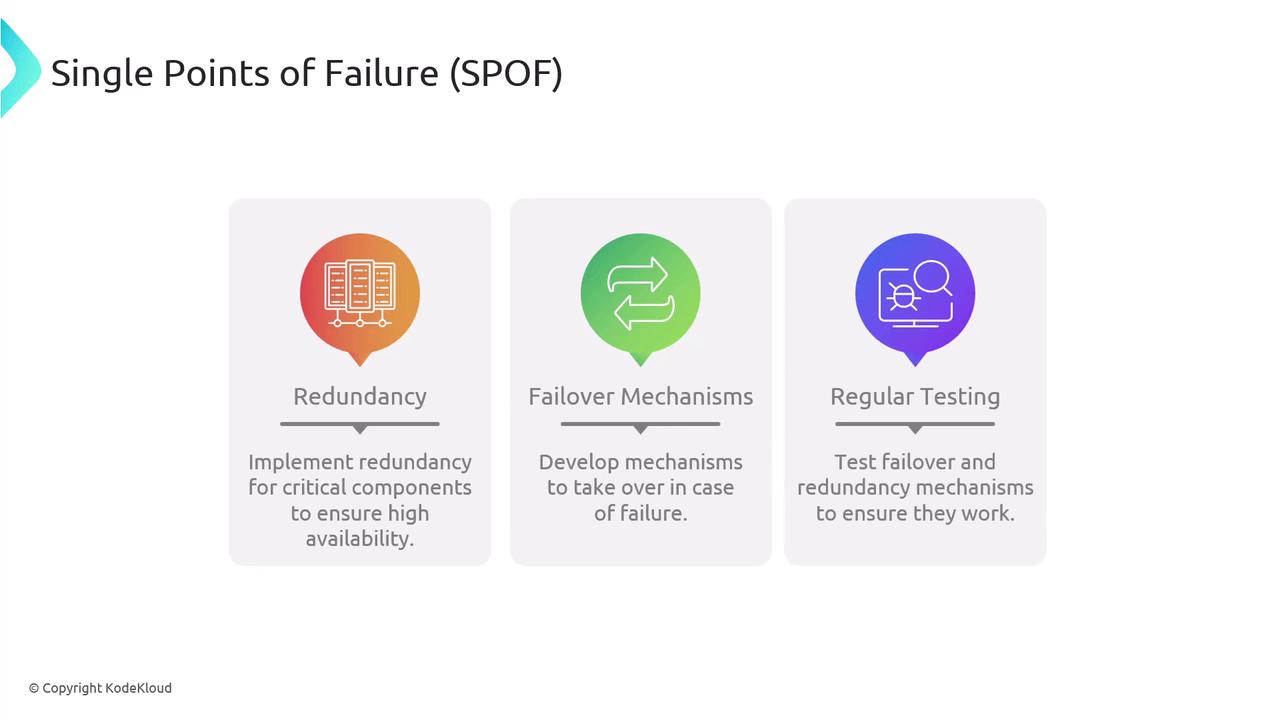
4. Technical Debt
Technical debt refers to the long-term challenges and costs incurred from quick, temporary solutions. Over time, these workarounds can accumulate, making the system more difficult to maintain and scale, and increasing maintenance costs.
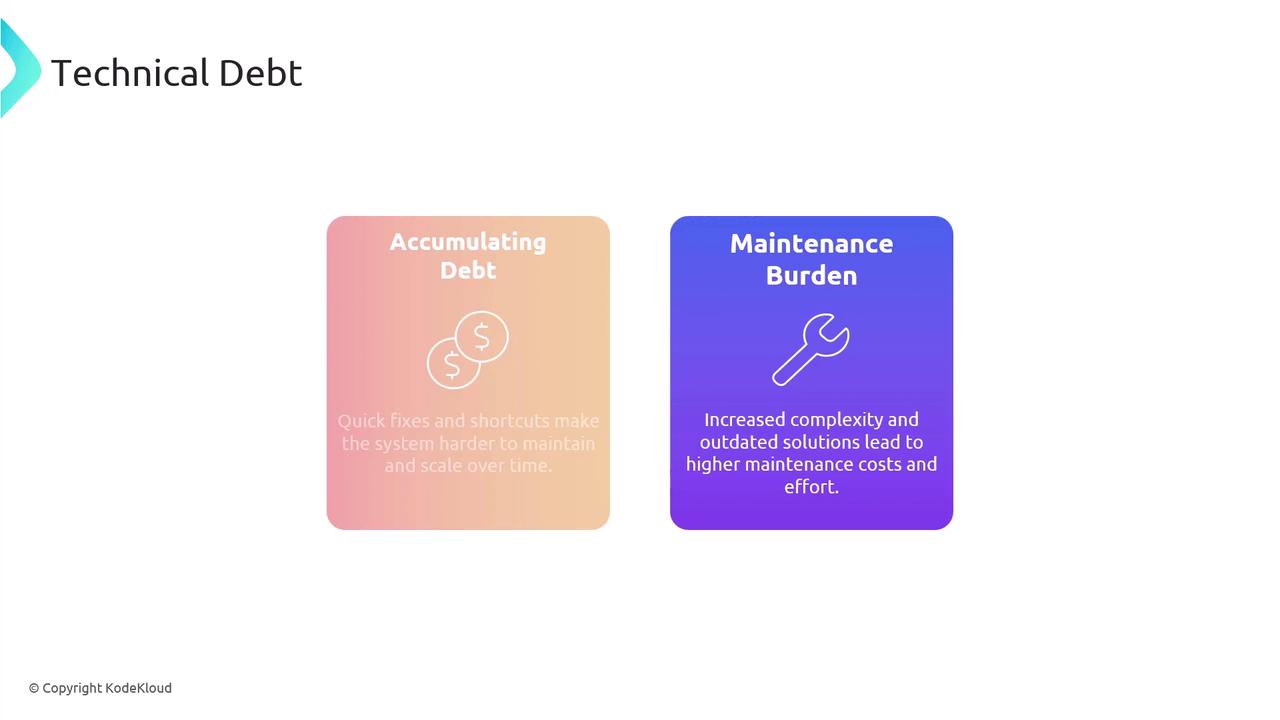
To mitigate technical debt:
- Perform thorough code reviews to catch issues early.
- Regularly refactor and update automation scripts.
- Follow industry best practices and standards in system development.
Note
Proactively managing technical debt helps ensure that your automation systems remain scalable and maintainable as your infrastructure evolves.
5. Ongoing Supportability
Ongoing supportability is the capacity to maintain and extend automated systems over time. Challenges include managing regular tool updates, bridging skill gaps, and keeping documentation current.
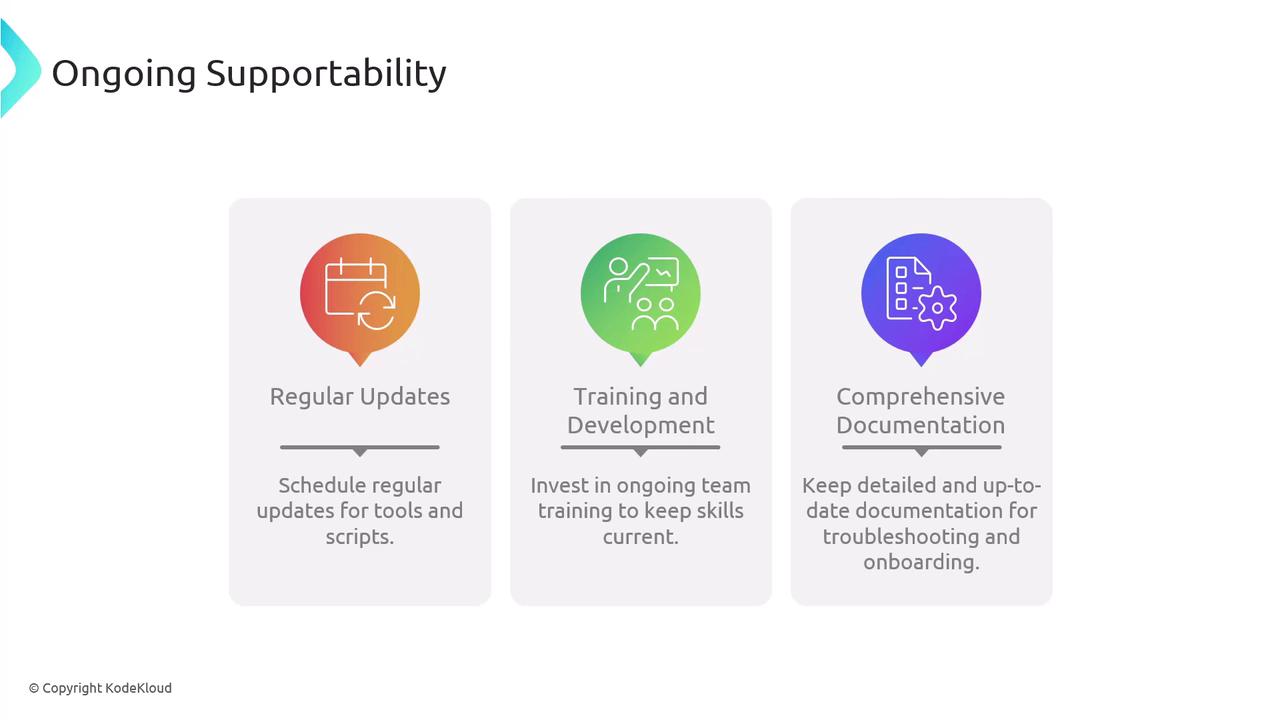
To enhance ongoing supportability:
- Establish and adhere to a regular update schedule for tools and scripts.
- Invest in continuous training and development for your team.
- Keep documentation detailed and updated to support troubleshooting and onboarding.
Warning
Neglecting ongoing supportability may lead to outdated systems, security vulnerabilities, and operational bottlenecks. Regular updates and training are critical to sustaining system performance.
Conclusion
Automation and orchestration can transform IT and security operations, but success requires managing the inherent challenges. By addressing system complexity, controlling costs, eliminating single points of failure, mitigating technical debt, and ensuring ongoing supportability, organizations can fully realize the benefits of automation. Embracing these best practices ensures a robust, scalable, and resilient automation strategy for the long haul.
For further reading, explore topics on Kubernetes Basics and consult additional resources in the Kubernetes Documentation.
Watch Video
Watch video content